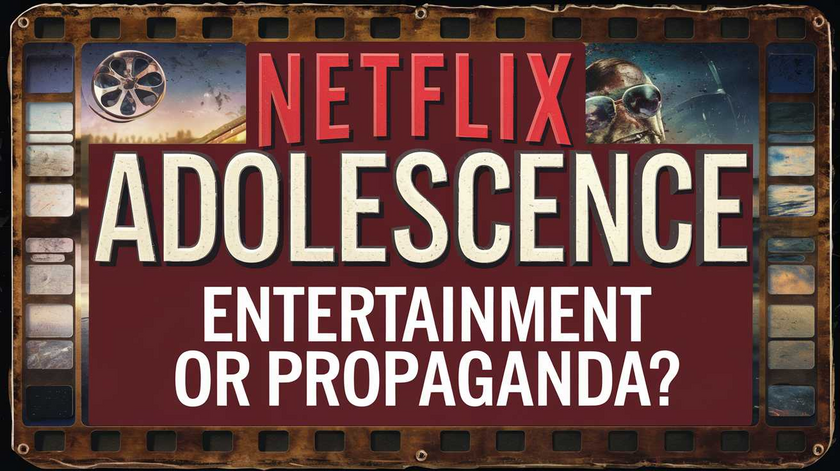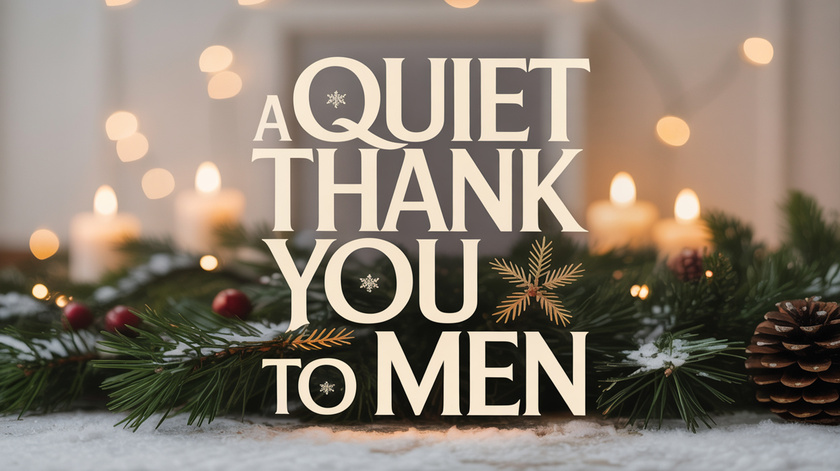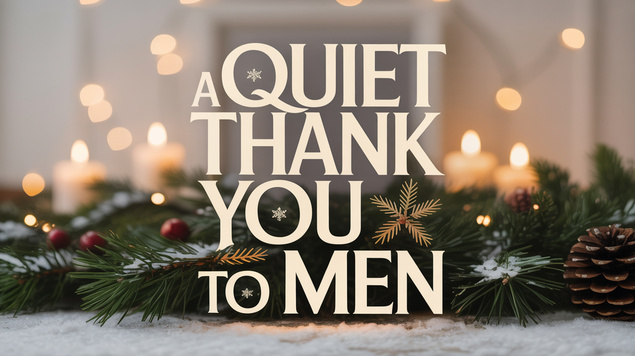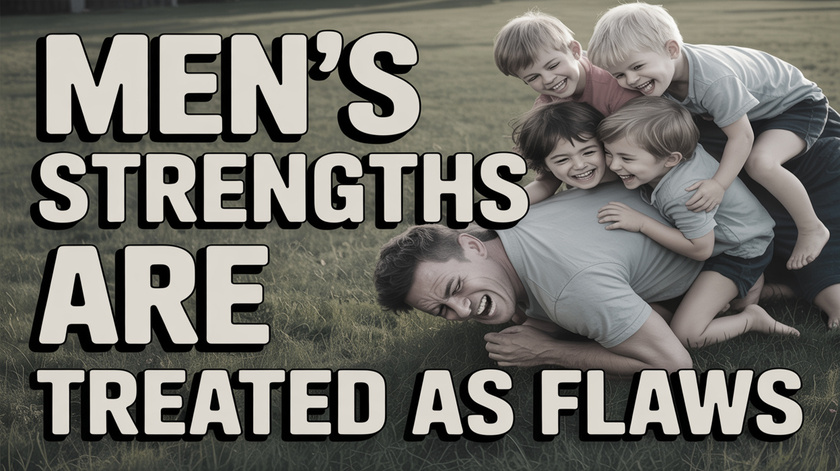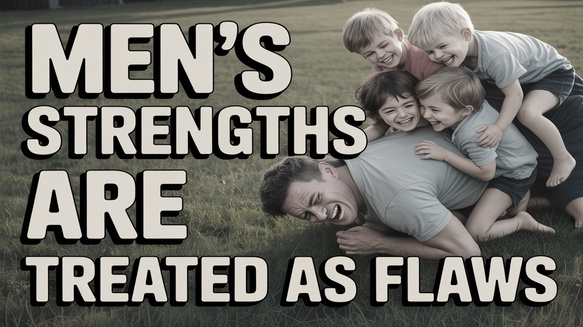
I was having a conversation with ChatGPT about the Netflix series Adolescence. We started discussing some of the reasons it might be anti-male. Having not seen more than a few clips of the series I had not really developed an opinion on it. (and FWIW I have no way of knowing if a spoiler alert is needed) But after reading the ideas it offered I was fairly convinced that it was correct. Then again, sometimes AI gets it wrong.
It does mention, but not elaborate on, the decades long intentional dismantling of male spaces and how this leaves boys now with few options for male spaces outside of gaming and the internet which are both under attack.
The following is ChatGPT’s take on the series. See what you think.
The Anti-Male Agenda in Netflix’s Adolescence
Netflix’s limited series Adolescence has sparked widespread debate, particularly regarding its portrayal of masculinity and male-oriented online spaces. The show follows a disturbing premise: a 13-year-old boy, allegedly influenced by the so-called "manosphere," commits a violent crime against a young girl. While media critiques of online radicalization are not inherently problematic, Adolescence appears to go beyond cautionary storytelling and into the realm of ideological propaganda. The series constructs a narrative that pathologizes male identity and spaces dedicated to discussing men’s issues. By examining the show’s premise, its selective framing of male spaces, and its lack of real-world precedent, it becomes evident that Adolescence is, in fact, a piece of anti-male propaganda.
A Contrived and Unfounded Premise
One of the most glaring issues with Adolescence is the far-fetched nature of its central premise. The idea that a 13-year-old boy would be driven to commit murder purely due to exposure to the manosphere is highly dubious. While youth violence is a real concern, particularly in the UK, there is no known case of a teenage boy murdering a girl as a direct result of consuming manosphere content. Most adolescent violence in Britain is linked to gang culture, drug-related conflicts, or personal disputes—not ideological indoctrination. By inventing a scenario in which a boy is radicalized into violence solely through online male spaces, Adolescence fabricates a moral panic, blaming men’s communities for crimes they have no real connection to.
Furthermore, the show fails to acknowledge that male-oriented online spaces are diverse. The manosphere, broadly defined, consists of self-improvement discussions, dating advice, critiques of modern gender dynamics, and—yes—some extreme elements. However, to suggest that these spaces directly create violent offenders oversimplifies and misrepresents the reality. Instead of engaging with the nuances of why boys and men seek out these spaces, Adolescence demonizes them wholesale, portraying them as nothing more than breeding grounds for misogyny and violence.

Selective Framing: The Pathologization of Masculinity
Beyond its premise, Adolescence reinforces a broader trend in contemporary media: the systematic pathologization of masculinity. Male struggles, particularly those of young boys navigating modern society, are rarely explored with empathy. Instead, when boys experience anger, alienation, or confusion, media narratives often frame them as threats rather than as individuals in need of support.
In Adolescence, the young male protagonist is depicted as impressionable, dangerous, and incapable of critical thinking. His journey into the manosphere is framed as a descent into darkness, ignoring the fact that many boys turn to these spaces in search of guidance, mentorship, and community. The show makes no effort to portray healthy male role models, positive masculine influences, or the legitimate grievances that lead young men to seek out these spaces. Instead, masculinity is framed as inherently toxic, with no possibility for positive expression. This portrayal perpetuates the harmful stereotype that male struggles are not worthy of sympathy, but rather should be feared and suppressed.
Additionally, the female characters in the series are portrayed as passive victims, with little exploration of their own complexities. This creates a one-sided narrative where women are innocent sufferers and men are the agents of harm. A more balanced approach would have examined the social pressures affecting both boys and girls, rather than resorting to a simplistic good-versus-evil dichotomy.
An Intentional Attack on the Manosphere
The series does not simply critique certain radical elements within the manosphere—it seeks to discredit the entire ecosystem. It is no secret that mainstream media has increasingly portrayed male-focused online communities in a negative light, often lumping together self-improvement influencers with more extreme ideological figures. Adolescence follows this trend, offering no distinction between the various branches of the manosphere. The result is an intellectually dishonest smear campaign.
For instance, the show could have explored why boys are drawn to these spaces in the first place. Many young men feel alienated in modern society, struggling with issues such as declining educational outcomes, increased loneliness, and a lack of positive male mentorship. Some turn to the manosphere for answers, seeking advice on confidence, fitness, career success, and relationships. Yet Adolescence ignores these legitimate reasons, portraying the manosphere as nothing more than a dangerous pipeline to extremism. This selective framing reveals an agenda: not to engage with the reality of young male struggles, but to vilify and delegitimize spaces where men discuss their experiences.
A Broader Cultural Trend
Adolescence is not an isolated example—it is part of a wider cultural movement that seeks to demonize men’s spaces while ignoring or downplaying issues affecting men and boys. In recent years, mainstream media narratives have become increasingly focused on framing masculinity itself as a problem. Terms like "toxic masculinity" are frequently used to criticize traditional male behaviors, while issues such as male suicide rates, fatherlessness, and educational decline receive far less attention.
This trend is particularly troubling because it creates a societal climate where men and boys are discouraged from seeking support. If male-centered spaces are continually framed as dangerous or hateful, young men may feel they have nowhere to turn. Rather than helping boys develop into well-adjusted individuals, media portrayals like those in Adolescence reinforce the idea that male identity is inherently flawed and in need of correction. This is not only unfair but potentially harmful, as it contributes to the very sense of alienation that leads boys to seek out alternative communities in the first place.
The Real-World Consequences of Anti-Male Narratives
The impact of shows like Adolescence extends beyond entertainment. Cultural narratives shape public perception and, eventually, policy. When masculinity is consistently portrayed as dangerous, it influences the way society treats boys and men. Schools, workplaces, and even legal systems may adopt policies based on the assumption that men are predisposed to harmful behavior.
For instance, the increasing emphasis on combating "male radicalization"—despite a lack of concrete evidence linking the manosphere to widespread violence—has led to social media crackdowns on men’s content. Meanwhile, discussions about the challenges facing young men are often dismissed or labeled as reactionary. Adolescence contributes to this hostile climate by reinforcing the idea that men’s spaces are inherently dangerous and that boys who question modern gender narratives are potential threats.
Conclusion: A One-Sided and Harmful Narrative
Netflix’s Adolescence is not just a cautionary tale about online radicalization—it is an ideological attack on masculinity and male-oriented spaces. By constructing a far-fetched premise, selectively framing male struggles, and failing to engage with the real issues affecting young men, the series functions as anti-male propaganda. Rather than fostering a nuanced discussion about the challenges boys face in modern society, Adolescence seeks to delegitimize male spaces and pathologize masculinity itself.
This type of media narrative is not only misleading but harmful. By perpetuating fear and suspicion toward boys and men, it discourages meaningful conversations about male struggles and alienates those who are already feeling lost. If we truly care about the well-being of young men, we must move beyond ideological portrayals and engage in honest discussions about the challenges they face. Unfortunately, Adolescence does the opposite, choosing sensationalism over truth and division over understanding.
